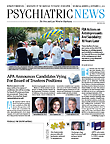The past 50 years have seen a great many advances in medicine, but an advance that is proving problematic is the ever-increasing placebo response in clinical studies of psychiatric drugs.
While a high placebo response can be beneficial if it improves patients’ well-being, it can also confound study results and hinder the flow of successful drug development. Controlled comparison trials are a vital part of testing new therapies, so figuring out what aspects of the design and/or execution of a clinical trial contribute to this placebo response trend are imperative—particularly for serious mental illnesses such as schizophrenia.
Bret Rutherford, M.D., and colleagues at Columbia University examined 105 randomized clinical studies involving antipsychotic medications for schizophrenia carried out from 1960 to 2013. Thirty-nine of the studies compared an active drug with a placebo, while the rest involved active comparators, such as comparing a high vs. low dose of a drug.
Their analysis, published online October 8 in JAMA Psychiatry, confirmed a dramatic rise in placebo response over the decades. In the 1960s, participants in the placebo arm of an antipsychotic study, on average, saw their Brief Psychiatric Rating Scale (BPRS) score dropping by about 3.5 points. “These patients were actually getting worse while taking a placebo,” Rutherford said.
By the 2000s, however, the response had shifted 180 degrees, and people taking a placebo in a clinical trial had raised their BPRS by more than 3 points. The effect of the active drug decreased continually over the same period, from a 13.8 average BPRS increase in 1960 to a 9.7 increase in 2013.
The strongest placebo improvements were found in studies that tested active comparators and/or had multiple arms. As Rutherford noted, in such cases a higher percentage of participants will receive at least some medication, which raises their expectations higher than a standard 50/50 drug or placebo trial.
Other factors associated with a greater placebo response included larger study size and longer duration. While larger studies increase statistical power, they also increase risk of errors and likely enroll less severely ill patients, which lowers the overall effect.
“Studies like this show we need to rethink our understanding of what a placebo is,” said Ofer Agid, M.D., an associate professor of psychiatry at the University of Toronto. “It’s seen as the ultimate neutral intervention, but now we see that certain factors can change a placebo’s power, such as how and who we recruit.”
On a positive note, most of the factors contributing to these trends—like patient expectations—were related to general clinical trial methodology as opposed to elements unique to schizophrenia patients; several had been previously implicated in a placebo-response analysis of depression studies that Rutherford and colleagues had carried out.
Rutherford suggested straightforward changes like maximizing the placebo arm to 50 percent whenever possible, limiting duration to 12 weeks or less, and recruiting patients with more severe illness.
“However, I think placebo-related research has a twofold significance,” Rutherford said. “While we definitely want to develop rational strategies to minimize the placebo effect in a controlled-trial setting, we should also apply research findings to the clinical setting to improve adherence or even outcomes.”
Rutherford noted that his previous analysis of depression studies showed a correlation between the number of scheduled therapeutic visits and placebo response. (A similar effect was not seen in this study, possibly owing to the high number of antipsychotic studies being done in inpatient settings.)
“Our community may be accustomed to telling their patients ‘go try this medication and come back in three months,’ ” he said. “If we increase the intensity of follow-up, we could do much better.”
This study was funded by the National Institute of Mental Health. ■
An abstract of “Placebo Response in Antipsychotic Clinical Trials: A Meta-analysis” can be accessed
here.

